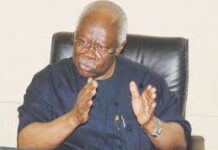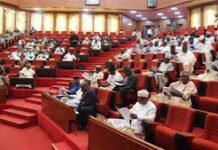INEC To Create New Polling Units Against External Pressures
Seye Olumide
POLITICS DIGEST – The Independent National Electoral Commission (INEC) is set to create additional 57,023 Polling Units, from the present 119,973. This is the first time the commission is carrying out this exercise successfully in 25 years.
A reliable source from the commission confirmed this to The Guardian yesterday after enquiries, but could not give the full details as at the time of going to the press.
To arrive at this, the commission decided to apply a lower and upper limit threshold to disaggregate the present PUs in the country. Some of the PUs have more than 1500 voters on the register.
It was gathered that after an initial miscommunication within INEC, the commission finally settled for the application of 500 lower limit and 750 upper limit in the process of disaggregation; meaning that the lower limit for any PU moving forward would be 500 registered voters, while no PU would have more than 750 registered voters. This may not have been possible if the incumbent INEC chairman, Professor Mahmud Yakubu had buckled when some forces pressurized him to scuttle the move.
The move, it was gathered, would have skewed the allocation of PUs in an unscientific manner in favour of some states. This was the allegation leveled against the previous leadership with the botched attempt to introduce 30,000 PUs, with the North allocated over 21,000, while the entire South got just above 8,000.
It was gathered that whereas INEC had been used to a 750 lower limit and 1000 upper limit threshold, some persons were pushing for a lower limit threshold of 1000 and upper limit of 1,999. Had the latter option been taken, some states would have lost many PUs. The direct implication of this would have been possible chaos on Election Day and a scenario whereby most voters would be disenfranchised.
Read Also:
Some of the Polling Units that would have been lost if the 1,000 minimum and 1,999 upper thresholds had been applied would have been Lagos, 2,895; Osun, 400; Ekiti, 160; Oyo, 1,078; and Delta: 1,012, according to a source.
It was during the flag off of the process on Monday April 19, 2021, that the commission finally stamped its authority on the process.
According to source, in a memo dated April 20, 2021, from INEC Secretariat, to Secretary/INEC, with number INEC/DE/No: 72/2021, titled: “Decision Extract on the Amendment of the Threshold For the Conversion of Voting Points to Polling Units’, the following was sent out:
“The Commission at its meeting held on Tuesday, 20th April, 2021, deliberated on the above subject and approved as follows:
a. The adjustment of the lower and upper thresholds for Voting Points from 750 and 1000 to 500 and 750 respectively
b. That the ICT and Electoral Operations Departments and the State and Local Government Area offices of the Commission should adopt these new thresholds in implementing the ongoing programme of expanding voting access to Polling Units.
“You may wish to refer the extract to all Resident Electoral Commissioners (RECs) and Directors for information and necessary action, please”
The memo was signed by Maryam Iya Musa, Director, Commission Secretariat and it was to all RECs and all directors.
A source at the commission’s headquarters in Abuja disclosed that: “the voting point platform, as widely known and accepted by stakeholders, was based on lower and upper thresholds of 750 and 1,000 registered voters respectively.
“They were used in 2011, 2015 and 2019 and that is why their conversion to independent polling units to decongest existing Polling Units appear to be the reason why Nigerians have accepted the initiative.”
An INEC official promised to give more clarification on this, but was not available as at press time.

















